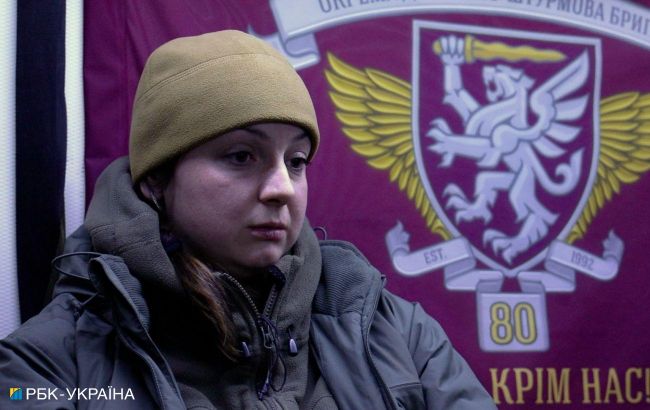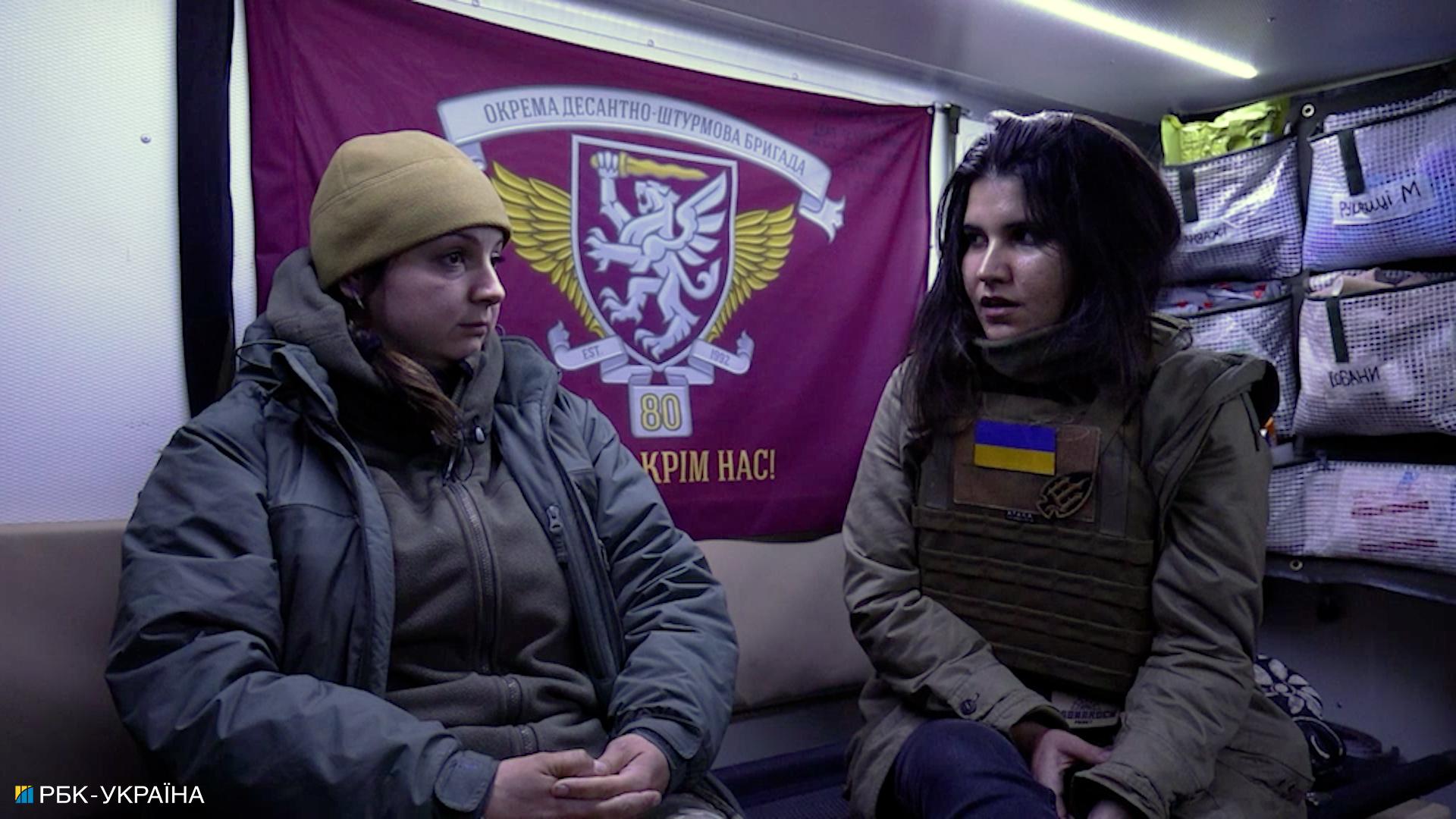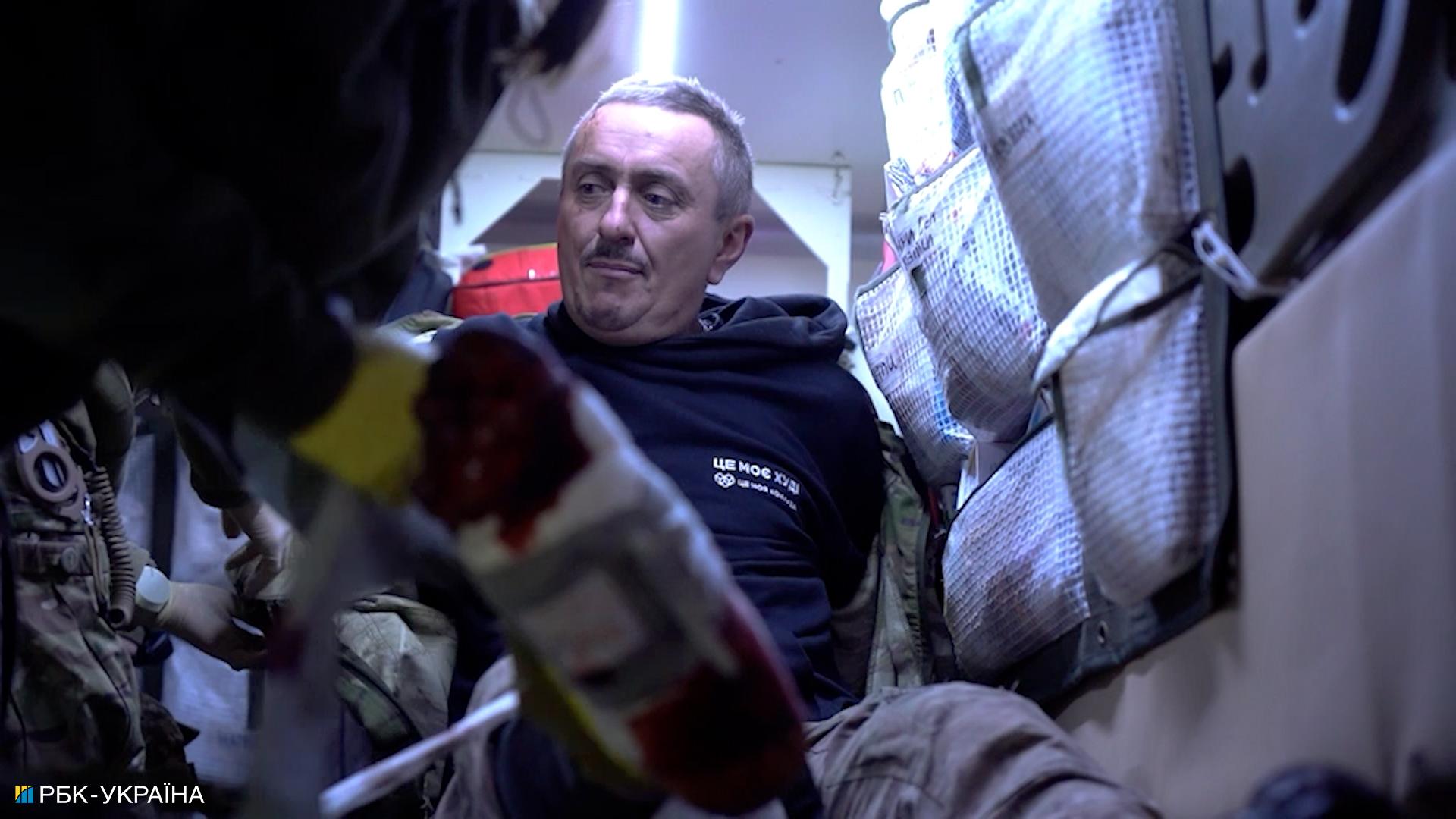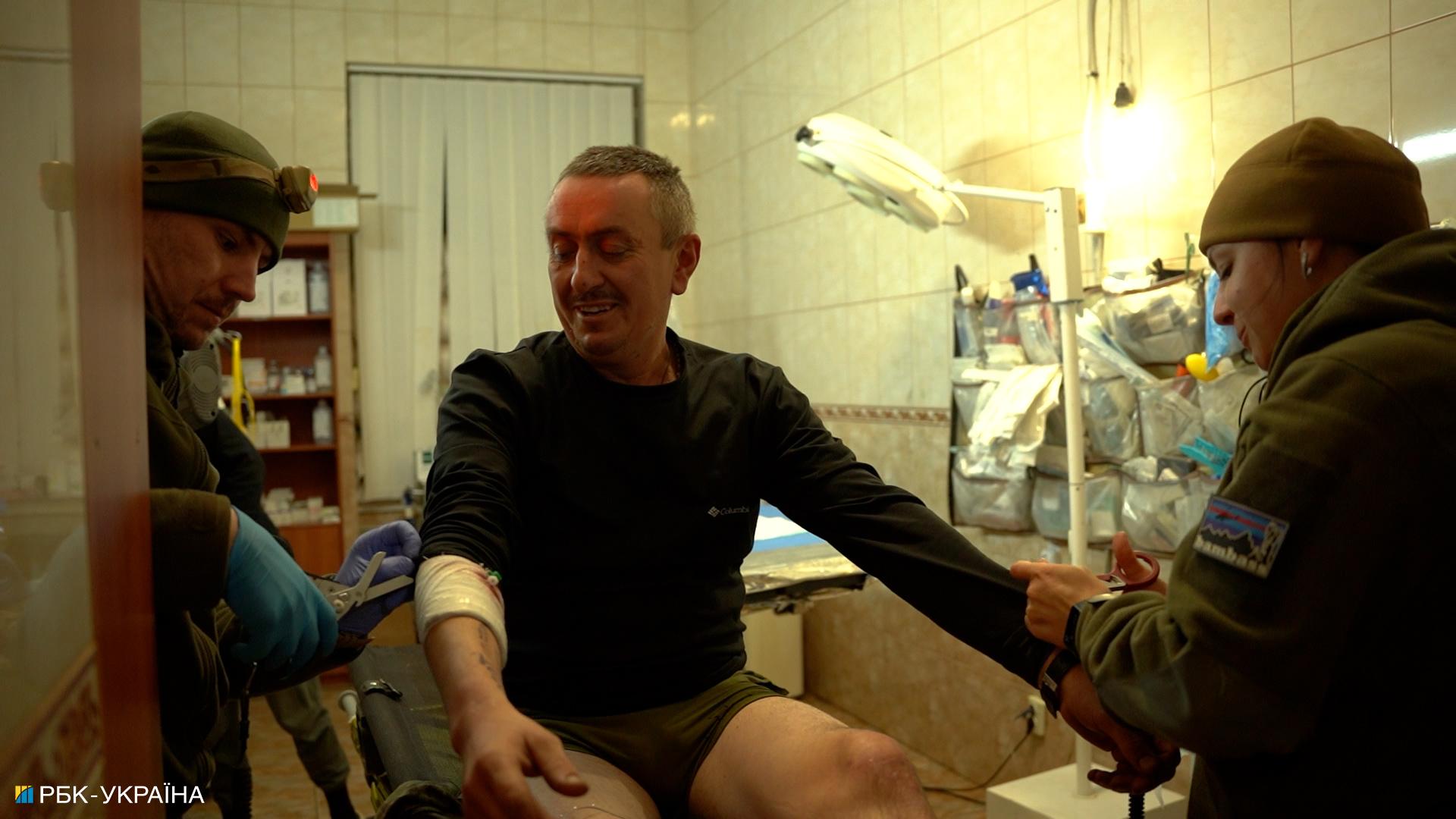'Up to 30 wounded in a day': Glimpse into work of combat medics on Bakhmut front
 Photo: Medic from the 80th Separate Airborne Assault Brigade, Anya (RBC-Ukraine)
Photo: Medic from the 80th Separate Airborne Assault Brigade, Anya (RBC-Ukraine)
The situation on the battlefield near Bakhmut is intense and exhausting. Ukrainian forces continue their counteroffensive, while the Russians exert maximum effort to hold their ground. Medics from the 80th Separate Airborne Assault Brigade state that every step is taken with blood, and their work in this direction is demanding. RBC-Ukraine visited the evacuation point for the wounded and the stabilization point of this brigade. Details about their work conditions and losses are covered in the RBC-Ukraine report.
Cold darkness pierces the air as we stand on an empty street that was bustling with hundreds of vehicles and military equipment during the day. The night has brought silence, and we wait for the military to take us to the place every fighter goes after being wounded - the evacuation point.
The headlights pierce the rear window, approaching closer and eventually aligning with our vehicle.
"They're behind us!" shouts a fighter, poking his face out of the door.
"Let's go."
The roads of Donetsk correspond to the combat situation in the region. Shells hole some, while others show the heaviness of the traffic moving on the old asphalt. As we move closer to the place where the wounded from the 80th Separate Airborne Assault Brigade are brought directly from the battles, we enter the evacuation point. From there, they proceed to the stabilization point and then to the hospital.
In the frontline regions, there are no night lights, and people try to keep the lights low to avoid drawing the attention of Russian aviation or drones. These are minimal safety measures. We barely had time to understand where we were until we reached the point.
Here, bright and smiling military medics greet us, contrasting with the street atmosphere. One of them, however, stands apart, with a long black beard and dark, contemplative eyes. He seems to be lost in his thoughts, separate from the rest.
But it doesn't last long. Among them, we notice a dog that brings a smile even to this tough guy. Through his clenched lips, a smile emerges as the dog runs by.
"We are at the evacuation point, where the wounded are brought from the front line. Here, we provide first aid, stabilize, and transport the patients to the next evacuation stage," says Anya, a medic from the battalion's medical point. Previously, she was a midwife in the postpartum unit of a joint mother-and-child facility in the Rivne region. Now, she receives fighters from the battlefield.

Photo: Medic Anya (RBC-Ukraine)
Suddenly, our conversation is interrupted by a message: there are wounded, wait. This is the third time today. Accustomed to such circumstances, medics get prepared. Through the radio, they learn about the evacuation process near the battlefield. All this is done to understand the situation and manage their time.
"As for the number of wounded, it varies - sometimes 1, sometimes 5. It depends on how many are being brought out and the number of wounded we have. There were days when we evacuated up to 30 wounded. We worked from 9 in the morning until 9 at night, not counting the night," says Anya, preparing the medevac for the reception of soldiers.
While waiting for the evacuation, we gaze at the sky. The lights are off, so the stars are visible more clearly. Perhaps amid galaxies, our problems seem insignificant, but that doesn't make it any easier. Right before our eyes, a war for survival rages, affecting millions of families. And it's unclear when it will end.
Through our thoughts, we hear the rumble of vehicles. These are soldiers torn from battle, bringing a wounded comrade. This time, they brought a fighter from the brigade who worked in the area of Klishchiivka. During the fighting, he stepped on an antipersonnel mine, which looked like a petal.
He is brought on armored vehicle and immediately directed to a medical vehicle. A group of medics works quickly to assist, and record data about who he is and how he got injured. The foot that stepped on the mine is hastily bandaged. Despite the twisted and bleeding heel, he remains cheerful. He even finds time to joke.

Photo: Wounded soldier in a medevac vehicle (RBC-Ukraine)
"We just bought these pants," he says, smiling. Even though his foot is bandaged in haste, it's clear that this was the first aid provided by his comrades. The medics remove the bandage, professionally tamponing the wound. Then they examine his entire body, cutting his pants and removing his upper clothing.
Their group operates near Bakhmut. As the Russians retreat, they leave behind many explosive surprises. According to the State Emergency Service, Ukraine tops the list of the most mined countries. Today, one of the mines was encountered by a fighter from the 80th Brigade.
According to him, six comrades carried the wounded man about four kilometers. Evacuation couldn't reach the red zone of the battlefield, so the fighters managed on their own.
"How do I feel after being wounded? Cheerful. My brain didn't melt. We'll break through. It's our job," says the wounded fighter when his foot is tamponed again. The pain cuts through, and he begins to scream. These are temporary measures to save his life - the blood flow needs to be stopped.
The medics, in turn, work quickly and smoothly, simultaneously maintaining contact with the wounded. It's important to talk to him, to understand if he is conscious. They usually ask about his family and encourage him that everything will be fine and that he will live. He must hear that. In such moments, there is always a need for someone to say something positive. Everything around is already filled with chaos and dirt.
Military personnel often refer to the day after being wounded as their second birthday. Medics are the people who regenerate them and give them a new start. They can then become friends and communicate for years. In war, people quickly come together, and this connection grows into something strong and lasting.
Providing necessary assistance on the frontline, the wounded are then transported to a stabilization point. There, in more sterile conditions, they are thoroughly examined, and their wounds are stitched up.

Photo: Wounded soldier at the stabilization point (RBC-Ukraine)
The corridor of the stabilization point is adorned with children's drawings saying "Come back alive" and national flags. When the fighters arrive here, they probably don't notice them. At that moment, everything happens quickly, with entirely different thoughts in their heads. But after stabilization, and leaving the ward, it's hard not to notice them. They want to address the fighters: thank you for your protection, we are waiting for you.
At the evacuation point, the medics return to their shifts to be ready to assist if needed. Combat medics often find themselves under fire while pulling out soldiers. Risking their lives, they only think about saving their comrades. For the enemy, the medical cross on the armor is just a target.
"During my service here, many medics have died. More men. Two girls," shares Anya, a medic who currently receives the wounded at the evacuation point.
She says the hardest part of the job is death: "Especially when friends die. And when a wounded person is brought in, you can't do anything anymore. It's tough. They die. You have to describe them, remove the ammunition, and find the person's documents, and badges. If the person is unknown, you have to find features. Pack them in a bag. Indicate the available data. This is all our work."
While the radio remains silent, Anya takes her turn. Sometimes her husband, the driver of the medical point's vehicle, comes to her - they both endure the length of this war, which, for now, has no end.

